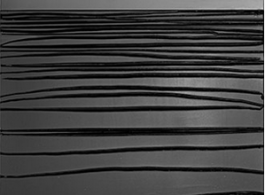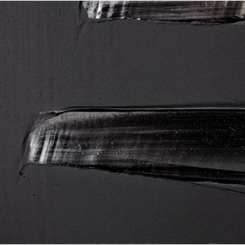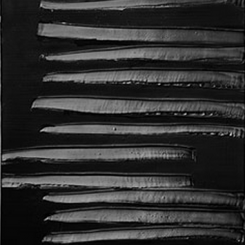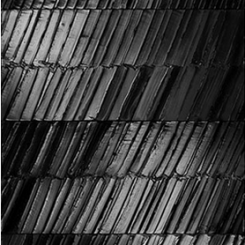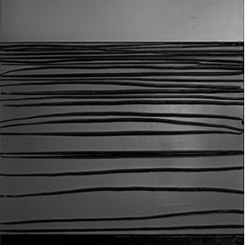Galerie Perrotin / Dominique Lévy
909 Madison Avenue, New York
Opening Reception : Thursday, April 24, 6-8 pm
Duration: April 24 – June 27, 2014
Beginning April 24th, 2014, Dominique Lévy and Galerie Perrotin will jointly present Pierre Soulages, the first American exhibition in ten years devoted to the most significant and internationally recognized living artist of France. The show will fill the historic landmark building at 909 Madison Avenue where both galleries reside, presenting a group of new large-scale paintings that reveal the rigor and atemporal power of a 94-year old master known as “the painter of black and light.” Born in 1919, Soulages is among the few artists still at work from the explosive postwar period when New York City emerged as the center of the art world, the place where American innovation and European traditions collided and coalesced into a new dominant school of gestural painting. By juxtaposing Soulages’ revelatory recent paintings with a group of his important postwar works, Pierre Soulages will highlight profound interconnections between Europe and America in modern and contemporary art while challenging certainties on the subject.

“Peinture, 296 x 165 cm, 4 janvier 2014″ 2014, Acrylic on canvas, 116 1/2 x 65 inches / 296 x 165 cm
On view through June 27th, Pierre Soulages introduces fourteen recent paintings from the artist’s ongoing Outrenoir series – metaphysically potent canvases with slashing black architectonics — alongside seminal works created in the 1950s and 60s, all on loan from major museums and important private collections. During the years following World War II, Soulages exhibited extensively in America, establishing friendships with New York peers Mark Rothko, Willem de Kooning, Robert Motherwell, and Helen Frankenthaler, among many others. His work thrived in the U.S. market, championed by James Johnson Sweeney, director of the Solomon R. Guggenheim Museum (previously curator at The Museum of Modern Art), and by legendary gallerist Sam Kootz. Perhaps it was Soulages’ feeling of belonging to no particular city or country that aided his success: He has said his only real language “was that of modern art,” and his undiminished fascination with that language continues to shape Soulages’ paintings today, enabling him to transmit light with black.
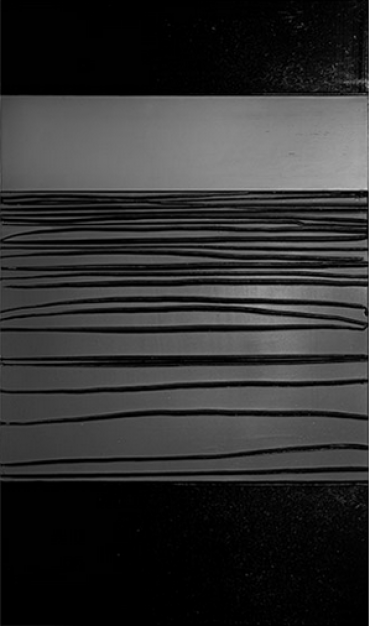
“Peinture 309 x 181 cm, 12 décembre 2013″ 2013, Acrylic on canvas, 121 3/4 x 71 1/4 inches / 309 x 181 cm
Opening a Mental Field: About the Exhibition
In the 1940s, Pierre Soulages made abstract works predominately in black, which he has described as “both a color and a non-color.” He produced his first mature paintings in 1947, applying walnut stain in heavy brushstrokes on a light ground. In 1948, America came knocking unexpectedly at his door in the form of James Johnson Sweeney, who was intrigued by talk in Paris of a painter who worked in broad black marks. By the mid-1950s, Soulages was painting with looser, slashing brushstrokes and began incorporating fluid, subtle washes of color. He exhibited actively in New York and other cities in the United States, becoming part of a community of Abstract Expressionist artists channeling the spirit of the age into painting. Represented by the Kootz Gallery, Soulages attracted critical acclaim and drew the attention of avid private and museum collectors across the United States. His participation in Documenta I, II, and III (in 1955, 1959, and 1964, respectively) brought international recognition. But when Kootz Gallery shuttered in 1966, Soulages returned fully to Europe and to the next phase of his career.
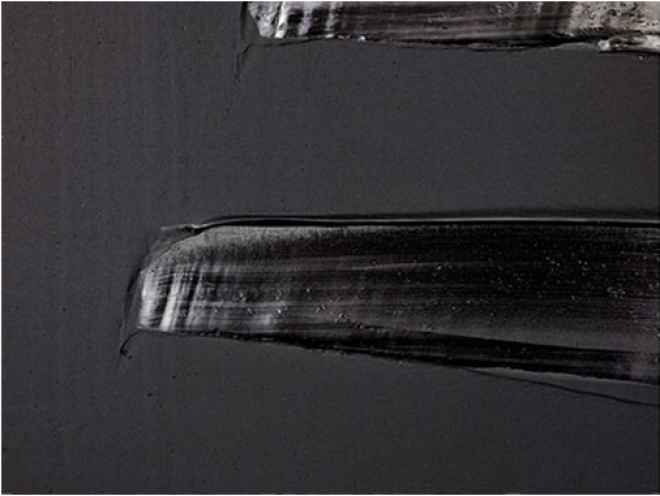
“Peinture, 202 x 159 cm, 19 octobre 2013″ (detail) 2013, Acrylic on canvas, 79 1/2 x 62 1/2 inches / 202 x 159 cm
In 1979, having already painted for over thirty years, Soulages made a dramatic break with his existing style and embarked upon a new approach to painting that he dubbed Outrenoir (the word outrenoir can be translated loosely from French as beyond black). By removing other colors and concentrating almost exclusively on black and its relationship with light, Soulages constructed a pictorial space that nevertheless stands opposed to the monochrome in the development of Modern art. Since this remarkable and deceptively radical mid-career shift of direction, Soulages has been exclusively devoted to Outrenoir and in it has located the locomotive of his output. Through Outrenoir he envisions a type of painting that can offer an immersive experience to the viewer, one that draws people in and engages them in the array of textures that light and shadow create on canvas. “When light is reflected on black, it transforms and transmutes it,” Soulages once said. “It opens up a mental field all of its own.”
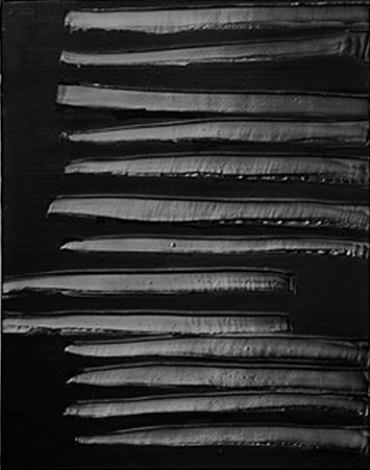
“Peinture, 202 x 159 cm, 19 octobre 2013″ 2013, Acrylic on canvas, 79 1/2 x 62 1/2 inches / 202 x 159 cm
Thus Outrenoir has been a continuous 35-year investigation into abstraction’s power to reorganize visual and psychological experience. Across the 1980s and 90s, and into the 21st century, and carrying the experience of postwar breakthroughs toward the present, Soulages has continued his investigation into the potential of gestural blackness. Works from Outrenoir have become part of the history of art, joining major museum collections in North America, Europe, Russia, and Asia. Fourteen new paintings from this grande série, made between late 2012 and early 2014, will serve as the centerpiece of Pierre Soulages.
Soulages has stated that his only desire has been to achieve the kind of pictorial presence he found in the caves of Lascaux and the menhirs of his birthplace, Rodez. The confident experimental strokes of the earlier works on view in Pierre Soulages reveal themselves as part of a clear progression toward Outrenoir’s evocations of chiseled stone, dark landscape and desiccated flesh. Among key examples on view in the exhibition are pictures form the 1950s, bearing the artist’s signature titles derived from the dimensions of his works – paintings such as ‘Peinture 195 x 130 cm, 2 juin, 1953’ (1953) and the beautiful ‘Peinture 195 x 130 cm, 1955’ (1955), which is on loan to the exhibition from the National Gallery of Art in Washington, D.C. Soulages’ most recent paintings align him still with American Abstract Expressionism and the well-known American artists who were his postwar peers – figures who also built upon memories and biographical pre-occupations. For example, de Kooning never lost touch with his Rubensian women, nor did Clyfford Still lose his vivid connection with the Pacific Northwest and Canadian landscapes. There is a similar narrative undercurrent to Soulages’ newest work. Large-scale recent paintings on view in Pierre Soulages, including ‘Peinture 128 x 181 cm, 14 février 2012’ (2012), ‘Peinture 181 x 162 cm, 26 janvier 2014’ (2014), and ‘Peinture 293 x 165 cm, 23 décembre 2013’(2013), hint at memories of a hardscrabble youth spent in rural wartime France, in the harsh and beautiful country that is the Aveyron area. Such references are reduced by the artist’s brush to an extreme clarity that in turn suggests the transformation of suffering into transcendence.

